Remote Patient Monitoring in Westchester County

Reducing Hospital Readmission Rates in Westchester County
Amelia Home Care addresses avoidable readmissions by blending live 24/7 Professional Remote Care Coordination (RCC) with the latest intuitive remote patient monitoring.
Our team provides timely interventions, bridges external care services, and addresses patient psychosocial needs. RCCs collect and share patient data with the healthcare team, a key pillar in preventing avoidable readmissions.
With thousands of patients, Amelia Home Care is seeing a reduction in readmission rates of 91 to 95 percent.
Remote Care Coordination in Westchester County
Our Remote Care Coordinators (RCCs) provide face-to-face, video chat interactions with your patients to monitor and assist in adherence and reducing readmissions while improving clinical patient outcomes.
With the ability to visually record patient vitals, assess patient needs for medication refills, food, transportation to medical appointments, and social interactions, our coordinators develop personalized patient care with established protocols.
Available 24/7, RCCs cover the extended hours and weekends when staffing from Home Health is typically limited. Amelia Home Care patients thrive with more attention and interaction, and their satisfaction scores prove it!
Care Pathways for Westchester County Clients
Amelia Home Care has over 95 Care Pathways currently available to our clients including combination pathways for patients with multiple co-morbidities.
These pathways include branch logic and RCC protocol for follow-up questions. Our RCCs are trained to identify and report issues with post-acute and post-surgical patients, including the identification of SIRS criteria, which may lead to sepsis.
In addition to pathways questions, vital signs, and video conferencing, we have educational videos, teach-back questions, reminders, and the ability to assist patients in obtaining appointments, video-conferencing with family members, and other members of the care team.

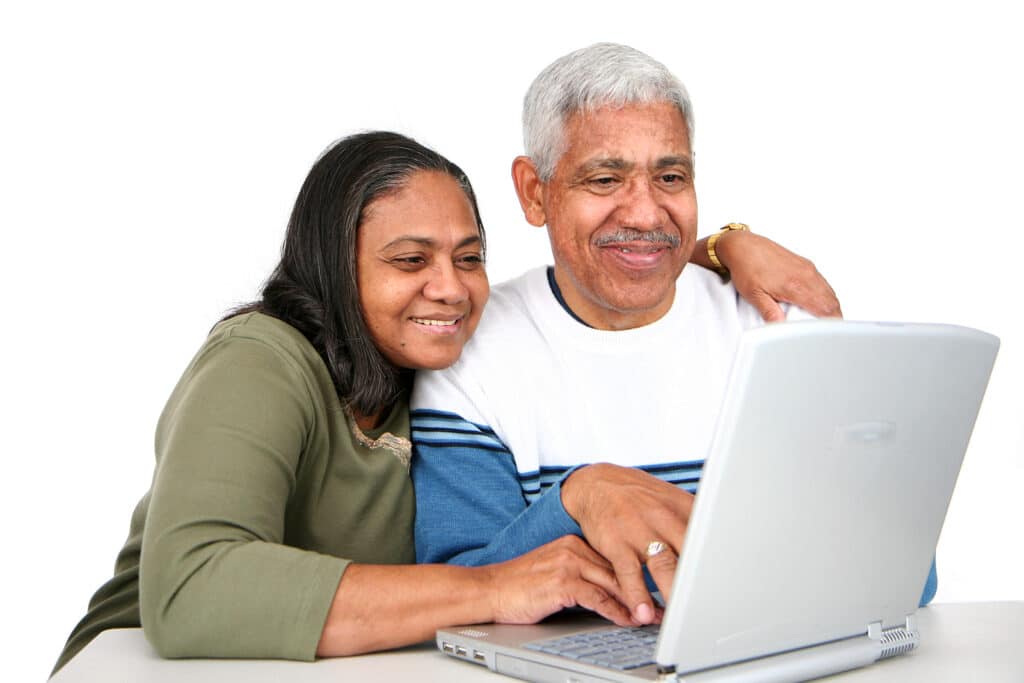
Psychosocial Needs and Socialization for Westchester County Residents
Often, many of our patients are seniors between 70 to 95 years old, and many are lonely and isolated. The RCC’s responsibility is to engage in casual conversations, beyond the illness and discuss life, and joyful matters.
For patients who require more attention, often receive multiple video calls per day and are assigned to volunteers to check in with the patients.
The results are astonishing, leading to reduction of readmissions, happier patient satisfaction, and increased RPM utilization rate.
Amelia Home Care Health Platform
Based on the patient’s capability and comfort level utilizing their preferred communication device, Amelia Home Care provides a variety of platforms to ensure as many patients are enrolled in the program as possible.
For patients accustomed to utilizing their own personal smartphone or tablet (Apple or Android), an easy-to-download application is provided.
A telehealth kit, which consists of a tablet with built-in internet and wireless medical devices and is intuitive to operate, can be delivered to the patient’s home.
If both are not viable options, their assigned RCC can render phone calls to retrieve ongoing data collection so no patient is left out of the program.
Authorized physicians, nurses, nursing staff, and Home Health agencies will have access to patient data and telehealth communication with the patient based on their security access privileges.
Oftentimes, physicians and nurses find it more convenient to work with the assigned RCC.
Based on schedule or ad hoc calls, the RCC can engage the physician on a group video conference with the patient by sending a link to the physician’s email or phone.
Upon clicking the link, the physician will be able to join the secured video conference call with the patient.
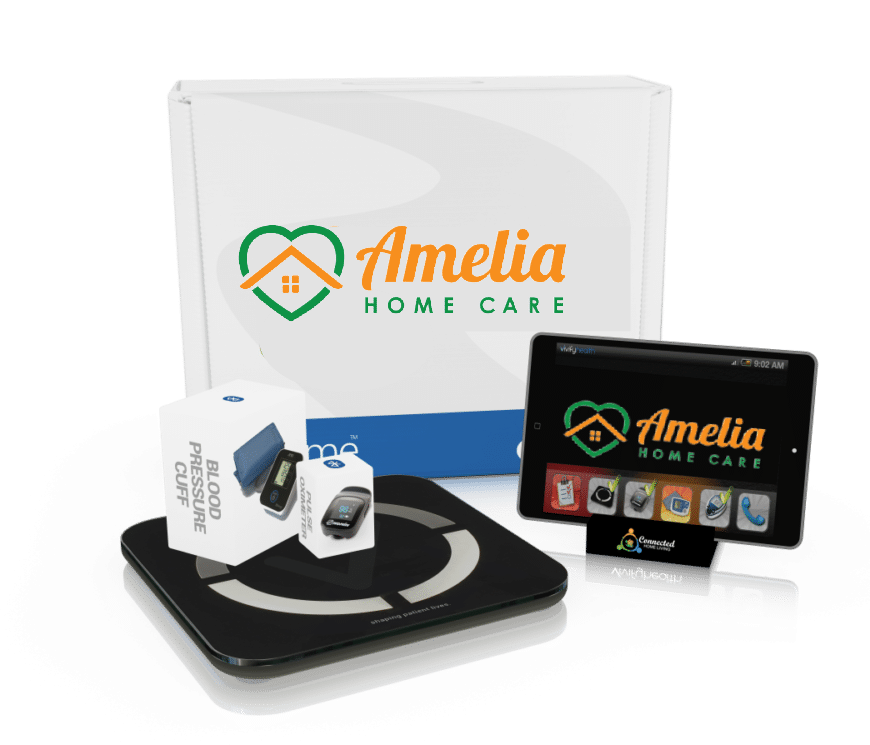

How We Help Hospitals and Health Systems in Westchester County
TURN-KEY communication center for efficient coordination of care – no implementation or set up fee.
FACILITATE safe return to home – enabling shorter hospital length of stay.
REDUCE unnecessary hospital readmissions.
ENABLE the efficient and streamlined monitoring of post-acute care.
MANAGE the volume of incoming data based upon clinically defined thresholds.
COLLECT clinically meaningful data to enhance and adjust care.
SUPPORT client/patient autonomy through education and communication.
ENHANCE resource management to ensure clinical visits are necessary, with documented justification.
DRIVE value-based care by increasing and enhancing ongoing interactions between patients and clinicians.
DEFINE the standard of care in the marketplace.
How We Help Physician Groups in Westchester County
TURN-KEY remote monitoring communication center for efficient coordination of care.
FACILITATES ease of access to patient data.
MANAGES the volume of incoming data based upon clinically defined thresholds.
COLLECT clinically meaningful data to enhance and adjust care.
SUPPORT the delivery of higher quality care to more patients.
REDUCE unnecessary hospital readmissions.
ENABLE the efficient and streamlined monitoring of post-acute care.
SUPPORT client/patient autonomy through education and communication.
ENHANCE resource management to ensure clinical visits are necessary, with documented justification.
POSITION practice for the value-based care market by increasing ongoing interactions between patients and clinicians.
DEFINE the standard of care in the marketplace.
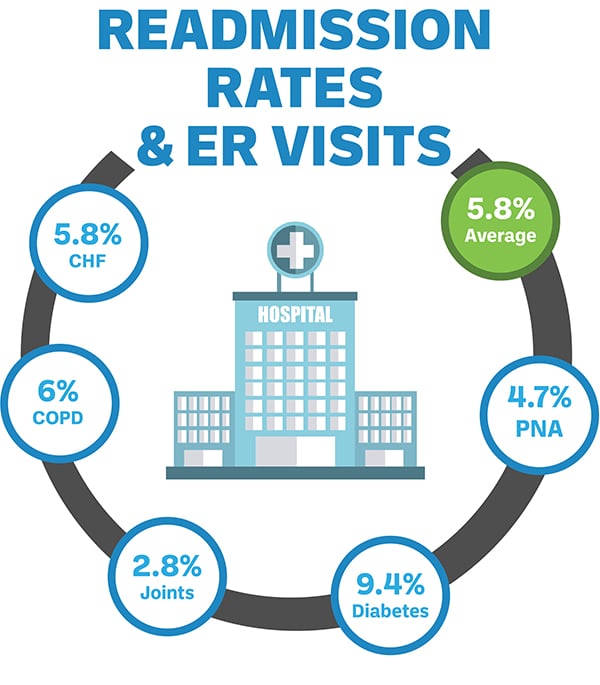

How We Help Accountable Care Organizations Who Serve Westchester County
- CHRONIC CARE management supporting a reduction in Medicare costs.
- IMPROVED communication channels between multiple providers and specialists.
- ENABLE enhanced care coordination throughout the medical care continuum.
- REDUCE unnecessary and redundant healthcare service.
- FACILITATE your ability to meet CMS standards for cost savings.
- COLLECT clinically meaningful data to enhance and adjust care.
- SUPPORT client/patient autonomy through education and communication.
- ENHANCE resource management to ensure clinical visits are necessary, with documented justification.
- DRIVE value-based care by increasing and enhancing ongoing interactions between patients and clinicians.
- ENGAGE patients in their care and drive patient centricity.
Programs and Plans

Amelia's Tele-Home Care Family Pack for Westchester County Residents
How Does Virtual Caregiving Work?
- Sign-up loved ones based on their needs and technological ability using a smartphone, tablet, computer or landline
- Amelia Home Care develops a care plan and trains your loved ones to use our telehealth solution
- Daily Health Surveys monitor your health
- Live Remote Care Coordinators (RCCs) evaluate your needs and provide support
- RCCs escalate issues to a Family Member or Nurse, based on pre-defined protocols
- Nurse or Physicians may assess and treat patient using video triage*
- RCC can coordinate medication, food, and supplies
Are you ready for an Amelia Home Care Certified Technologist to install and train your family to be connected and safe. With Amelia’s Tele-Home Care Family Pack, Seniors can live independently longer, safe from falls and other common concerns.
There’s an emergency button to request help at anytime, and also activity sensors that will detect hazards and call for help when it’s need.
Seniors can live independent longer, safe from falls and other common concerns, with Amelia’s Tele-Home Care Family Pack.
There’s an emergency button to request help at anytime, and also activity sensors that will detect hazards and call for help when it’s need.
Best of all, caregivers can check in anytime – without disturbing the senior or invading their privacy.
How Does Amelia’s Tele-Home Care Family PackWork?
Amelia Home Care is a Certified Technologist that Installs and Trains for You!
Install The Family Pack.
A personal assist button, front and back door entry sensors, and motion sensors for the Kitchen, Hallway, and Living Room are easy to install. It includes everything you need to address concerns of falls, wellness, and loneliness in a new collaborative way. Installation is fast and simple.
The activities of daily living are learned.
The normal lifestyle patterns of the senior are privately learned, without a wearable, and insights can be accessed by members of your Trusted Circle of friends and family.
Smart Home Center
This makes your home intelligent. Simply plug it in to power and plug in a wired internet connection. The free app will walk you through the whole process.
Personal Assist Button
Push it at any time to alert the people in your Trusted Circle and let them know that assistance is needed. Or change its behavior to record access to medication.
Front Door and Back Door Entry Sensors
They attach to a home’s high-traffic doors in just minutes so you can know when someone comes and goes. Install extras on medicine cabinets, refrigerators, and microwaves.
Kitchen, Hallway, and Living Room Motion Sensors
They alert for potential falls, sleep problems, and more. We recommend one motion sensor every 500 square feet of living space, so the base pack covers about 1,500 square feet.
Professional Monitoring. 24/7.
When lifestyle patterns change unexpectedly, automatically alert your Trusted Circle and the Emergency Call Center to get help fast.
The Amelia Home Care Trusted Circle
This intelligent system uses easy to install wireless sensors around the home (no cameras) to learn daily activity patterns and alerts family, professional caregivers, and emergency services (if necessary) of falls and potential hazards even if the emergency button is out of reach.
The Trusted Circle is an exclusive group of contacts who care for the wellbeing of a friend or loved one using Amelia Home Care Family in their home.
Trusted Circle contacts receive Group SMS Notifications and In-App Push Notifications to actively participate and immediately respond to falls and other potential hazards or simply stay in the know. Contacts can also use the Amelia Home Care Family app to get real-time wellness status updates, daily reports, and more.
Join the Trusted Circle
- You will receive a text message invitation from Amelia Home Care.
- Click on the provided link, download the Amelia Home Care app, and follow the instructions to setup your Amelia Home Care account.
- Add the Amelia Care Family Emergency Call Center phone number to your contact list for safekeeping. Unknown numbers are often considered SPAM so it’s best to be ready to help when called upon


How it Works
This intelligent system uses easy to install wireless sensors around the home (no cameras) to learn daily activity patterns and alerts family, professional caregivers, and emergency services (if necessary) of falls and potential hazards even if the emergency button is out of reach.

Know that everything is okay. Get real-time wellness status updates, daily reports, and more.
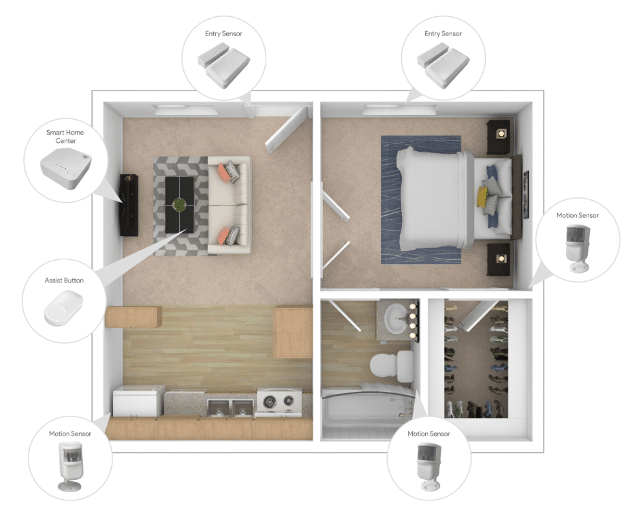
Monitors the home 24/7 including fall detection, failure to return, sleep monitoring, and more.
When problems arise, Amelia Home Care Family communicates outward in a tiered escalation methodology as urgency increases. This approach gives family and professional caregivers an opportunity to get involved and deescalate issues before dispatching Emergency Services.

Get alerted and know what’s happening.
Get involved right away to help resolve the issue.
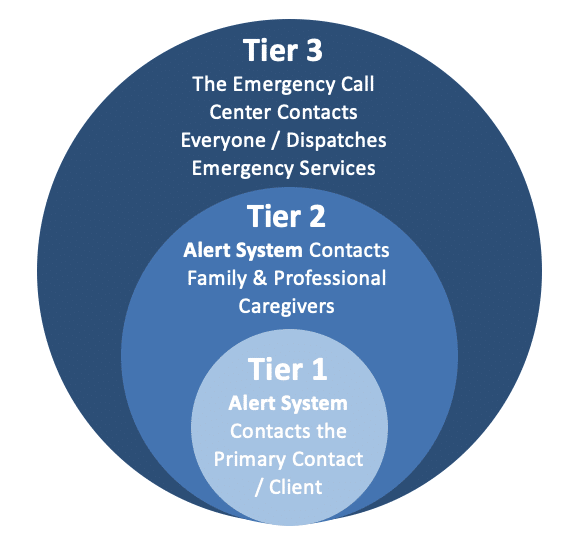
Group SMS Notifications, In-App Push Notifications,
24/7 Call Center, & Emergency Services
Features for Every Lifestyle
Captures and describes lifestyle patterns into the app
- Check-in remotely, review the Daily Report, and know where people were last seen.
- Detects when people are home, away, or sleeping.
- Record access to medication with a variety of medication activity sensors.
Measures sleep quality with an activity sensor in the bedroom. - Track trips to the bathroom, showers, and bathroom falls with a bathroom motion sensor.
- Identifies meal activities with access to the microwave, coffee, and fridge.
Alerts when problems are detected
- Fall detection without a button: alerts on unexpected inactivity in the home.
- Medical alert button to call for emergency help or simply request assistance.
- Alert if occupants do not get up in the morning.
- Notify if occupants did not make it to the bedroom at night.
- Detect if the stove is left on, unattended.
- Delivers reminders if people forgot to take medication.
- Mold and mildew detection with added humidity sensors.
- Integrates fall and SOS alerts from Apple Watch and Samsung Galaxy Watch.
- Uses text messages for alerts, so family participants don’t have to download an app.
Proven to help fight senior depression, loneliness, and isolation
- Coordinates and assigns a new family member to reach out each day, with suggestions on what to talk about from the last person.
- Smart Speaker support to control the home, play music, and connect family.
Adds needed support for Dementia and Alzheimer’s
- Alerts when perimeter doors open to detect wandering.
- Predicts when occupants should arrive back home, and alerts if they’re not.
- Pings your phone if someone is caught roaming around the house at night.
- Water leak detection for the bathroom and toilet.
Expandable
- Apple Watch and Samsung Galaxy Watch keep track of falls.
- Amazon Alexa and Google Home integrate to control with your voice.
- Smart Locks secure the home and provide access to the Trusted Circle.
- Smart Bulbs and Plugs to control lighting and appliances with your voice.
- Connected Thermostats integrate to control comfort and save energy.
- Security system enabled with a siren and keypad helps seniors feel in control.
About Westchester County
Westchester County is located in the U.S. state of New York. It is the seventh most populated county in New York and the most populated north of New York City.[5] According to the 2010 U.S. census, the county had a population of 949,113, estimated to have increased to 967,506 by 2019.[1] Situated in the Hudson Valley, Westchester covers an area of 450 square miles (1,200 km2), consisting of six cities, 19 towns, and 23 villages. Established in 1683, Westchester was named after the city of Chester, England.[6][7] The county seat is the city of White Plains, while the most populous municipality in the county is the city of Yonkers, with an estimated 199,663 residents in 2018.
The annual per capita income for Westchester was $67,813 in 2011. The 2011 median household income of $77,006 was the fifth highest in New York (after Nassau, Putnam, Suffolk, and Rockland counties) and the 47th highest in the United States.[8] By 2014, the county’s median household income had risen to $83,422.[9] Westchester County ranks second in the state after New York County for median income per person, with a higher concentration of incomes in smaller households. Simultaneously, Westchester County had the highest property taxes of any county in the United States in 2013.[10]
Westchester County is one of the centrally located counties within the New York metropolitan area. The county is positioned with New York City, plus Nassau and Suffolk counties (on Long Island, across Long Island Sound), to its south; Putnam County to its north; Fairfield County, Connecticut to its east; and Rockland County and Bergen County, New Jersey across the Hudson River to the west. Westchester was the first suburban area of its scale in the world to develop, due mostly to the upper-middle-class development of entire communities in the late 19th century and the subsequent rapid population growth.[11] Because of Westchester’s numerous road and mass transit connections to New York City, as well as its shared border with the Bronx, the 20th and 21st centuries have seen much of the county, particularly the southern portion, become nearly as densely developed as New York City itself.[citation needed]
The Timothy Knapp House, built around 1670, is the oldest standing building in Westchester.[36](p9) Philipse Manor Hall and the Old Dutch Church of Sleepy Hollow are also among the oldest, built around 1682 and 1685 respectively. Philipse Manor Hall is located in Getty Square, Yonkers, and is operated by the New York State Office of Parks, Recreation and Historic Preservation.
The former Edwin H. Armstrong House is the only delisted National Historic Landmark in Westchester. Current National Historic Landmarks in the county are:[37]
- The Aaron Copland House
- The Armour-Stiner House
- The Boston Post Road Historic District
- The Elephant Hotel
- The John Hartford House
- The John Jay Homestead
- The John William Draper House
- Kykuit
- Lyndhurst
- Old Croton Aqueduct
- Old Dutch Church of Sleepy Hollow
- Philipse Manor Hall
- Philipsburg Manor House
- Playland
- St. Paul’s Church[38]
- Stepping Stones
- Sunnyside
- Thomas Paine Cottage
- Van Cortlandt Manor
- Villa Lewaro
Caregiving

Map of Westchester County
Map of Directions from Westchester County to Amelia Home Care
Driving Direction from Westchester County to Amelia Home Care
Westchester County, New York
Get on I-87 S in Greenburgh from Bedford Rd, NY-100 S/NY-9A S and Saw Mill River Pkwy S
12 min (7.9 mi)
Head west on Bruce St toward Central Ave
404 ft
Turn right onto Central Ave
233 ft
Turn left onto Walnut St
157 ft
Turn right onto Locust Rd
0.3 mi
Turn right to stay on Locust Rd
0.3 mi
Sharp left onto Bedford Rd
0.8 mi
Turn left onto the ramp to Elmsford/White Plains
0.2 mi
Merge onto NY-100 S/NY-9A S
0.9 mi
Use the right lane to merge onto Saw Mill River Pkwy S via the ramp to Yonkers
4.1 mi
Use the right lane to take the I-287 W ramp to I-87 W/Albany
0.5 mi
Keep left at the fork, follow signs for I-87 S/N.Y.City and merge onto I-87 S
0.8 mi
Follow I-87 S, I-278 W and Belt Pkwy/Leif Ericson Dr to Shore Pkwy in Brooklyn, New York. Take exit 7 from Belt Pkwy/Leif Ericson Dr/Shore Pkwy
57 min (43.3 mi)
Merge onto I-87 S
Toll road
19.1 mi
Use the right 2 lanes to take the I-278 W/Triboro Br exit toward Manhattan/Queens
Toll road
0.3 mi
Merge onto I-278 W
Toll road
3.1 mi
Take the I-278 S exit
0.4 mi
Continue onto I-278 W
3.0 mi
Keep left to stay on I-278 W
2.4 mi
Keep right to stay on I-278 W
5.6 mi
Keep right to stay on I-278 W
1.6 mi
Keep left at the fork to continue on Belt Pkwy/Leif Ericson Dr/Shore Pkwy, follow signs for Queens
7.7 mi
Take exit 7 toward Ocean Pkwy
0.1 mi
Continue on Shore Pkwy. Take Ocean Pkwy to Ocean Parkway Service Rd
7 min (1.1 mi)
Merge onto Shore Pkwy
0.3 mi
Turn right onto Ocean Pkwy
0.4 mi
Turn left onto Ocean View Ave
0.1 mi
Turn right onto Brighton 2nd St
0.1 mi
Turn right onto Brighton Beach Ave
0.2 mi
Turn right onto Ocean Parkway Service Rd
Destination will be on the
Amelia Homecare, Inc
3007 Ocean Pkwy 1ST FLOOR, Brooklyn, NY 11235